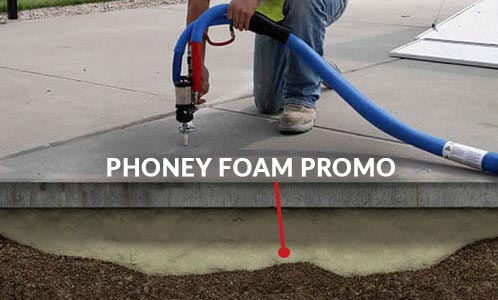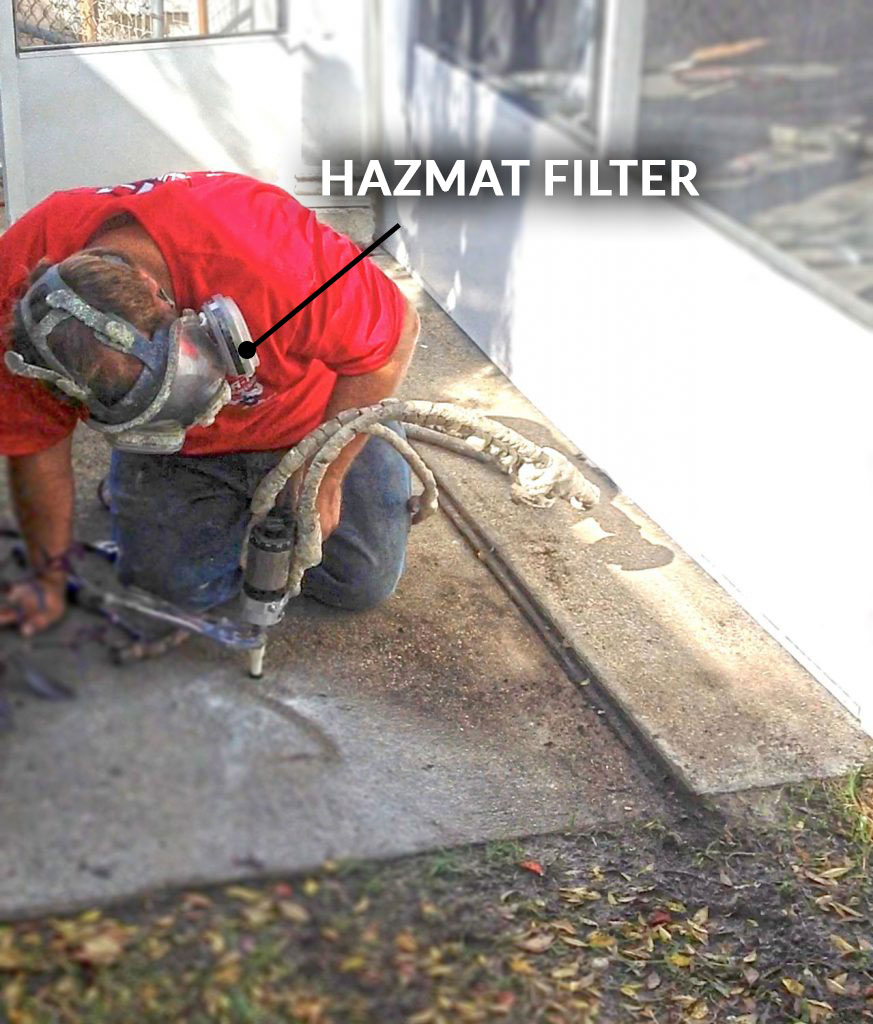Two part poly-foam injection procedures will leave your concrete slab propped up on foam blob, leaving 50 to 80% of the under slab area as open cavities.
Concrete slabs, such as driveways, are expected to support heavy vehicles and in order to do so the entire slab must be properly supported, with no cavities under the concrete slab.
However, the poly-foam injection process will result in differential uncontrolled support blobs scattered haphazardly below the slab, surrounded by cavities, which will result in unnecessary cracking and breakage when the precariously supported slab is back in service.
A consistently filled base using poly-foam injection is simply not possible. Foam can only fill 12-inch glass cube (poly-foam advertizing), because the two-part foam injection system set up in 5 seconds or less, therefore only a blob is created, which will take on the shape of a snowman should a second or third injection is required.
These poly-blobs conveniently out of the customer’s sight, under the concrete slab, are not structurally reliable, especially when your concrete slab was poured thin. If this is the case it becomes very important to insure the entire slab is universally supported. A concrete slab is typically referred to as a “slab-on-grade” for specific reasons.
The only true slab jacking process proven over decades is the conventional Mudjacking method that ensures universal support with no voids or cavities. There is no substitute or better method.
Poly-Foam Facts:
- Polyurethane involves two chemicals that must be proportionately mixed at the right temperatures. If this mixing is not done correctly the resulting foam will easily crumble and deteriorate leaving the concrete slab unstable;
- The two polyurethane chemicals are mixed together directly under the concrete slab, should there be any foreign substance present, such as water, the resulting foam will deteriorate quickly and the concrete slab will become unstable;
- When Poly-Foam products burn Carbon Dioxide and Hydrogen Cyanide is created as a sooty flame, which is dangerous if inhaled;
- The recent Grenfell Tower fire in London, UK was compounded by the poly-foam cladding, which is now a banned product;
- Poly-foam dissolves in hydrocarbon based solvents such as: toluene, acetone;
- Rodents can eat through poly-foam products;
- Freezing poly-foam with water in the pores will cause it to breakup into pellets, to be eaten by birds and other animals, undermining the stability of the slab;
- Poly-foam products are banned as a food container in many states in the USA;
- Poly-foam is not accepted as a recycling material, should you remove your concrete any underlying poly-foam will have to be handled as hazardous product.




